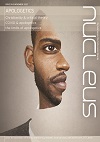background
With the tools of comparative or evolutionary genomics we can compare sequences found today, and using known patterns of sequence change, can infer the most likely relationships between these and discover the most probable ancestral sequences. These methods can be applied to virus sequences, or to the bacteria I usually study; but similar methods can be applied to a much wider range of data, including early texts such as the writings of the New Testament. The broader principles underlying the method can fruitfully be applied more widely still. By comparing SARS-CoV-2 genomes taken from COVID-19 patient samples with each other and with the genomes of other viruses we can learn many things. We see, for instance, that the virus, like other coronaviruses, has a low mutation rate, that it contains both normal and overlapping genes which are being acted on by natural selection, and that some genes are more important for its functionality than others. We can also see that its genome is very similar to other well-characterised coronavirus genomes but includes a couple of interesting major differences such as changes in a receptor binding site of the 'spike' glycoprotein and perhaps one or two additional short genes. These findings are made by taking whole genome sequences (the information in the full ~30,000 nucleotide viral RNA molecule), comparing them to each other, counting the various kinds of differences observed, and using these differences to infer the relationships and kinds of changes occurring between them. The core methods in this area of study involve the conversion of genome sequences into phylogenetic trees via the alignment of sequences and calculation of their most probable histories.the original text of the New Testament is known with great confidence
The same general kinds of comparative methods applied to microbial genome sequences can also be applied to the sequences of ancient Greek letters found in the early manuscripts of the New Testament. This is an active field of highly technical research, with many recent articles and theses, and a lot of debate on the most appropriate methods. The basic facts of the broader field of 'textual criticism', however, are straightforward, and will be surprising to most people not aware of the strength of the evidence. We can have high scientific confidence that we know the vast majority of the original words of the books of the New Testament.When discussing the differences between his views and that of his Christian mentor, the noted skeptic Prof. Bart Ehrman said: 'If he and I were put in a room and asked to hammer out a consensus statement on what we think the original text of the New Testament probably looked like, there would be very few points of disagreement — maybe one or two dozen places out of many thousands.' [1]
Why such academic consensus? Isn't the reliability of the biblical text a matter for faith rather than science? In the first few centuries, hundreds of early manuscripts were translated into multiple different languages including Greek, Latin, Coptic, and Syriac. Scribes copying manuscripts made mistakes, or sometimes changed words to suit their own assumptions. These changes can be compared, and the most likely original inferred using our knowledge of other scribal changes. Variants that look like simple mistakes, like minor spelling errors, are some of the most important, as they are probably not due to intent and so the same pattern of minor mistakes is unlikely to arise independently. Anyone who's had to mark students' work will know that one of the surest ways to catch cheating is to find shared mistakes. Different students are unlikely to make the same series of mistakes by chance, but it's highly likely when people copy each other.
It's the same when scribes copy manuscripts; following sets of shared and unique mistakes, as well as seeing the most common version among early manuscripts, can help us to cluster manuscripts into 'families' and work out likely earlier versions of the text going right back to the beginning. The fact that the early transmission of the New Testament was not controlled by a central authority is important — the 'sequences' were freely mutating and spreading across a wide geographic region. Unlike the case for the Qur'an, for example, there was no early period where New Testament manuscripts were collected and standardised. All this doesn't prove that the Bible is true, but does mean that the message of the Gospels cannot be rejected as being a matter of later invention or distortion.
from similar principles there is a rational case for God's existence
The detailed methods of phylogenetics rely on some broad principles which are held in common with other fields of science. In particular, the principles of simplicity and avoiding invention — or more technically, 'parsimony', also known as Ockham's Razor, and avoiding ad hoc explanations. To most people, this might sound strange, but simplicity is extremely important across science and medicine. Without this principle, we could claim extremely complex causes which are consistent with any evidence presented, such as a combination of ten different diseases of specific organs when instead one accounts well enough for all of the observed symptoms. Instead, however, scientists typically look for the simplest explanation sufficient to account for the data. This principle underlies, for instance, the building of phylogenetic trees (whatever detailed mathematical approach is used). Without it, we could invent all kinds of complex histories which are consistent with the data observed, but instead we tend to prefer the path involving fewer changes and fewer entities.A related principle is that we should avoid unnecessary inventions, or 'ad hoc explanations'. In comparative genomics, we prefer explanations which refer to causes we already have some evidence for (eg mutations of a type already seen in nature), and we want to avoid tacking on new elements to a theory to account for new evidence. It is better for a hypothesis if it doesn't need to be changed in order to account for new data.
These same principles can be applied when exploring the evidence for God. Let's quickly compare two claims: 1) God exists (theism), 2) there is no God and nothing like God (naturalism — definition according to philosopher Alvin Plantinga). [2] Naturalism, if it gives any account at all, relies on multiple independent (and unproven) explanations for the origins of the universe, cosmic order, consciousness, and ethical knowledge, while theism unites these independent lines of enquiry by ascribing them to a single cause with the right properties to account for them — a personal transcendent source.
This seems to win some simplicity points, as explored in depth by leading philosopher of science and theism Richard Swinburne, amongst others. Secondly, regarding avoiding inventions, Christian theism in particular does very well. The basic claims come primarily from historical evidence concerning Jesus of Nazareth. That the resulting picture of the world should also be useful in explaining the diverse categories of evidence listed above, such as cosmic order and ethical knowledge is, I think, really remarkable. The early Christians weren't thinking about laws of nature, cosmological fine tuning, or meta-ethics when they started worshipping Jesus!
Naturalism, by contrast, offers a bunch of disconnected explanations which have had to be updated as our knowledge of the world has increased. From the materialism of some ancient Greek thinkers, to the determinism of Laplace, to the eternal universe of Bertrand Russell, to the wide variety of incompatible naturalisms on offer today, the fundamental picture of naturalism has had to evolve and become more complex to keep up with reality, scoring badly in the ad hoc department.
































